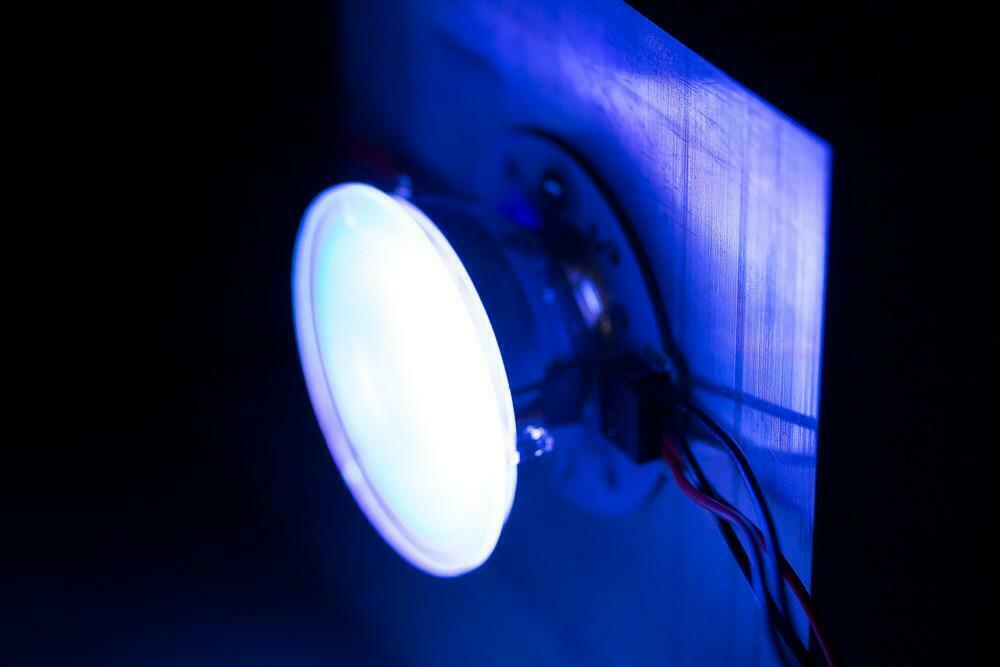I hadn't even thought about how hard it would be to characterize the thermals on an array like that. With a bolt hole in the middle to really put pressure on the center of the array, and a really good thermal paste, you should be able to share the heat efficiently enough that a good heatsink should suffice based on your testing so far? Think my 4.6" wide, 60" long, very heavy heatsinks should probably cool four or five of them with some good airflow over the length of the heatsinks?Measuring stack dense arrays is harder to control for. The radiant energy is enough to tan by (and already had a mishap from a free floating reflector getting knocked into the LEDs, which had a really nice melting effect), so the thermocouple measurements have a lot of radiant heating.
Using the FLIR method and setting emissivity down to 0.45 (a guideline for uncoated LEDs) shows we're still under peak temperatures even at the core. The outer rings are fine. The hottest LEDs are, to no ones surprise, the violets due to their lower efficiency.
I'm setting up for some extended bake tests. This is 100W, and really does need a good heatsink and copious airflow.
What do the channels look like for these arrays? Voltages and currents would be nice to help plan.
Thanks for keeping us in the loop, it's exciting watching the developments unfold!



















